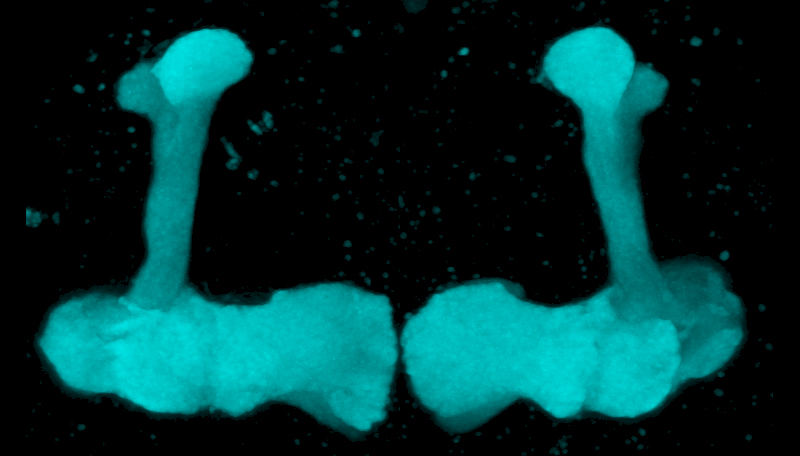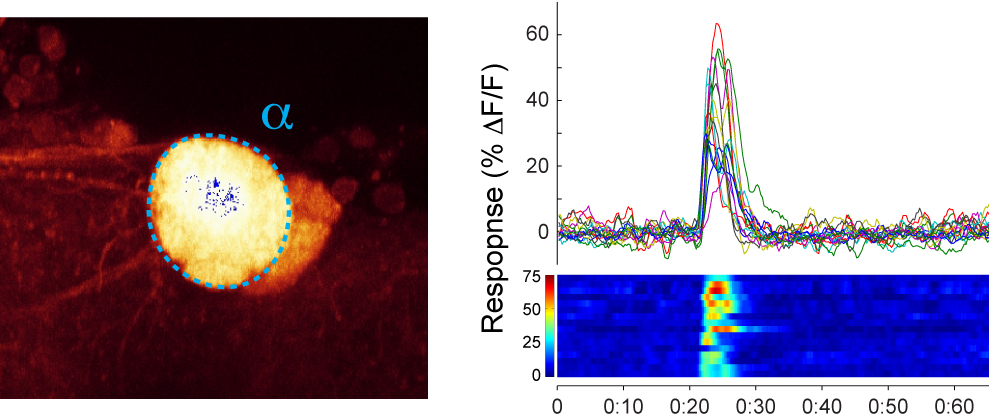Research Projects
Our lab focuses on two major areas of research: (1) learning and memory, and (2) neuronal effects of the genetic disorder neurofibromatosis type 1. These are related, as we seek to understand both how the brain encodes memory in normal conditions, as well as to understand how fundamental features of brain plasticity are altered in disorders that affect brain function.
Learning and Memory
Humans and animals are endowed with great capacity to adjust our behaviors, allowing us to respond appropriately to different situations. We learn from experience, altering our behavior based on the predictive value of past experiences. This capacity for learning is one of the most important functions of our brains, which is why memory loss is so catastrophic to individuals, their families, and the health care system. Our lab endeavors to understand how memory works, and to how it fails in diseases that result in memory loss. In order to understand how the 86 billion neurons in the human brain support learning and memory, we must break the problem down into tractable questions in simpler model organisms. We therefore study neuronal function in the common fruit fly, Drosophila melanogaster. The powerful genetics of this model system, combined with our approaches for in vivo imaging and localized manipulation of neuronal activity, enable deep characterization of neuronal circuit function. We are focusing on how dopaminergic pathways are involved in shaping learning and memory. Specifically, we are studying the roles of candidate signaling molecules that are potentially involved in dopamine-dependent memory trace formation. In addition, we are looking at how major signaling pathways (such as cAMP/PKA) are activated during learning, and how activation of these pathways modulates the responses of the neurons that encode memories. Finally, we are examining how neuronal responses are altered following memory acquisition or upon salient environmental changes, with a focus on dopaminergic circuit function.

Understanding how the brain works, how its functions go awry in disease states, and how we can approach treating these diseases are fundamental goals of neuroscience research. To make substantial progress in unraveling the complex functions of the brain, it is critical to understand how neuronal circuits acquire, process, and store information, as well as how the nervous system uses this information to modify behavior.

In pursuit of these goals, we use in vivo imaging of genetically encoded fluorescent reporters in both live flies and in isolated, intact brains. These imaging techniques, combined with behavioral analysis of mutant and wild-type animals and genetic screens, provide multiple angles to approach the function of molecules, neurons, and circuits involved in innate and learned behaviors in exquisite detail.
Neurofibromatosis 1
Neurofibromatosis 1 (NF1) is a disorder characterized by tumors, and also includes cognitive and behavioral symptoms. Approximately 60% of people with NF1 have attention deficit-hyperactivity disorder and 10% have autism spectrum disorder. Therefore, the genetic mutation that causes NF1 affects brain function. A major focus of our research is aimed at understanding how the genetic mutations underlying NF1 impact neuronal function, ultimately leading to behavioral alterations. In pursuit of this overarching goal, we are studying how Nf1 mutations lead to hyperactivity and neuronal circuit dysfunction in Drosophila. An early observation from these studies was that Nf1 mutations lead to hyperactivity and excessive grooming. This must result from overactivation of neuronal circuits that regulate these motor behaviors, providing a platform to examine how Nf1 affects neuronal circuits. We are using this model to examine the neurodevelopmental vs. adult contributions of Nf1 to neuronal function, elucidate the molecular biology of the disorder, examine novel protein interactions, and probe the neuronal circuit effects of Nf1 mutations. The goal of these studies is to build the foundation of knowledge of the disorder that will be necessary to develop novel avenues for therapeutic intervention.
.jpg)